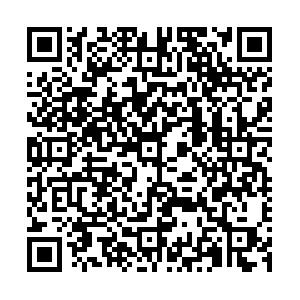The preliminary analysis about the effect of different rewarming speed on mild hypothermia therapy for HIE
-
摘要:
目的探讨不同复温速度对亚低温治疗新生儿缺氧缺血性脑病(HIE)的影响。 方法研究对象为36例亚低温治疗的HIE患儿,随机分为Ⅰ组(n=12,复温速度0.2 ℃/h)、Ⅱ组(n=12,复温速度0.3 ℃/h)及Ⅲ组(n=12,复温速度0.4 ℃/h)。治疗过程中动态监测心率、血压、脉氧饱和度,每日测定血糖、血象、肝肾功能、血钾,并于完成治疗后7、14、28 d根据NBNA评分评定短期疗效,生后3个月及6个月行Bayley婴儿发育量表评估中期疗效。 结果(1)复温达标时Ⅲ组血糖明显高于Ⅰ组及Ⅱ组,差异有统计学意义(P<0.05);Ⅲ组复温达标时血糖高于复温前,差异有统计学意义(P<0.05);(2)平均动脉压波动:Ⅲ组平均动脉压波动大于Ⅰ组和Ⅱ组,差异有统计学意义(P<0.05);(3)NBNA评分:生后7、14、28 dⅠ组及Ⅱ组NBNA评分明显高于Ⅲ组,差异有统计学意义(P<0.05);(4)生后3 月及6 月Ⅰ组神经发育指数、心理运动发育指数均高于Ⅱ组及Ⅲ组,差异有统计学意义(P<0.05)。 结论亚低温治疗时较慢的复温速度可维持更稳定平均动脉压及血糖水平,有利于改善脑灌注及代谢,起到保护神经功能并改善HIE预后,复温速度过快可能会增加血压波动及高血糖等不良反应的发生。 -
关键词:
- 亚低温 /
- 复温速度 /
- 新生儿缺氧缺血性脑病(HIE) /
- 新生儿
Abstract:Objective The preliminary analysis about the effect of different rewarming speed on mild hypothermia therapy for HIE. Method Research on 36 cases of mild hypothermia therapy of neonate with HIE, which randomly divided into the Group Ⅰ(n=12, rewarming speed 0.2 ℃/h), the GroupⅡ(n=12, rewarming speed 0.3 ℃/h) and the GroupⅢ (n=12, rewarming speed 0.4 ℃/h). Heart rate, blood pressure and pulse oxygen saturation are dynamically detected during the therapeutic process. Blood glucose, hemogram, hepatorenal function and serum potassium are daily measured. Short-term efficacy is evaluated in accordance with NABA Score when 7, 14 and 28 days after treatment. Also the medium-term efficacy is accessed according Bayley Scales of Infant Development at 3-month-old and 6-month-old. Results 1. The blood glucose of the Group Ⅲ is apparently higher than the others when having a good control (P<0.05) with statistical significance.2. The mean arterial pressure fluctuation: The Group Ⅲ is apparently higher than the others (P<0.05) with statistical significance. 3. NABA Score: The NABA Score of the Group Ⅰand the Group Ⅱ of a postnatal baby at 7-day-old, 14-day-old and 28-day-old are higher than the Group Ⅲ (P<0.05) with statistical significance.4. The MDI and PDI of the Group Ⅰare higher than the others when babies are at 3-month-old and 6-month-old (P<0.05) with statistical significance. Conclusions The slowly rewarming speed can maintain the mean arterial pressure and blood glucose level steadily on mild hypothermia therapy, which is in favor of improving brain perfusion and metabolism, especially protecting neurological function and HIE prognosis, while faster rewarming speed may result the blood pressure fluctuation and hyperglycemia. -
Key words:
- mild hypothermia /
- rewarming speed /
- hypoxic ischemic encephalopathy /
- Neonate
-
表 1 三组各项指标比较(x±s)
组别 HR(次/分) MAP(mmHg PLT(×109) 血K( mmol/L) 血糖mmol/L I组复温前 90.5±12.7 58.1±9.6 117.77±42.16 4.34±0.50 6.28±4.38 复温中1 h 92.1±11.5 51.7±9.1 90.69±14.32 3.79±0.64 5.38±2.66 复温达标时 110.8±10.0 56.0±7.2 103.85±21.77 3.98±0.39 3.58±1.85b 过程最高-低值差 25.8±9.1 1.2±0.2e 20.77±5.16 1.15±0.12 2.31±0.32 Ⅱ组复温前 90.7±10.9 59.0±9.5 127.31±51.63 4.18±0.56 6.35±3.16 复温中1h 97.4±10.7 45.8±9.0 95.15±18.60 3.98±0.42 5.08±1.89 复温达标时 118.8±16.9 49.6±4.5 92.69±22.83 3.93±0.29 4.89±2.21c 过程最高-低值差 30.8±7.2 2.9±0.1f 21.77±3.16 1.65±0.28 3.01±0.52 Ⅲ组复温前 90.6±11.6 58.2±9.0 109.54±17.90 4.15±0.65 6.18±3.43 复温中1 h 99.4±12.4 42.0±5.6 87.31±15.96 3.60±0.40 4.76±1.54 复温达标时 121.6±10.1 45.6±3.7 89.00±23.47 4.08±0.41 6.66±1.92a 过程最高-低值差 37.8±8.2 5.1±0.5d 20.71±6.29 1.95±0.24 2.51±0.22 注: 与同组复温前比较, aP<0.05; a 与b 比较, q=23.71, P<0.01; a 与c 比较, q=9.36, P<0.05; d 与e 比较, q=19.06, P<0.01; d 与f 比较, q=12.01, P<0.01. 表 2 三组患儿生后7、14、28 d NBNA评分比较(x±s,分)
组别 7 d 14 d 28 d Ⅰ组 32.1±2.2ab 33.9±0.8ab 35.9±1.3ab Ⅱ组 31.5±1.0a 33.1±0.9a 35.2±0.7a Ⅲ组 30.2±1.2 31.5±1.2 33.7±1.2 F 9.8 41.4 11.1 P <0.05 <0.05 <0.05 注: 与Ⅲ组比较, aP<0.05; 与Ⅱ组比较, bP>0.05. 表 3 三组患儿生后3、6个月Bayley婴儿发育量表评分(x±s,分)
组别 3 月 6 月 MDI PDI MDI PDI Ⅰ组 91.8±8.3ab 88.6±6.2ab 96.5±4.9ab 97.1±1.8ab Ⅱ组 83.1±8.1a 84.3±5.6a 93.1±4.5a 95.1±2.6a Ⅲ组 80.2±7.3 81.2±6.4 90.4±6.8 91.2±5.7 F 3.36 4.12 3.67 9.89 P <0.05 <0.05 <0.05 <0.05 注: 与Ⅲ组比较, aP<0.05; 与Ⅱ组比较, bP<0.05. -
[1] Gluckman PD, Wyatt JS, Azzopardi D, et al. Selective head cooling with mild systemic hypothermia after neonatal encephalopathy: multicentre randomised trial [J]. Lancet, 2005, 365(9460): 663-70. [2] Azzopardi DV, Strohm B, Edwards AD, et al. Moderate hypothermia to treat perinatal asphyxial encephalopathy[J]. N Engl J Med, 2009, 361(14): 1349-58. [3] Simbruner G, Mittal RA, Rohlmann FA, et al. Systemic hypothermia after neonatal encephalopathy: outcomes of neo.nEURO. network RCT[J]. Pediatrics, 2010, 126(4): E771-8. [4] Zhou WH, Cheng GQ, Shao XM, et al. Selective head cooling with mild systemic hypothermia after neonatal hypoxic-ischemic encephalopathy: a multicenter randomized controlled trial in China [J]. J Pediatr, 2010, 157(3): 367-72, 372.e1-3. [5] Jacobs SE, Morley CJ, Inder TE, et al. Whole-body hypothermia for term and near-term newborns with hypoxic-ischemic encephalopathy: a randomized controlled trial[J]. Arch Pediatr Adolesc Med, 2011, 165(8): 692-700. [6] 孙金峤, 陈燕琳, 周文浩. 亚低温治疗新生儿缺氧缺血性脑病临床效 果的Meta分析[J]. 中国循证儿科杂志, 2009, 4(4): 340-8. [7] Tagin MA, Woolcott CG, Vincer MJ, et al. Hypothermia for neonatal hypoxic ischemic encephalopathy: an updated systematic review and meta-analysis[J]. Arch Pediatr Adolesc Med, 2012, 166 (6): 558-66. [8] Perlman JM, Wyllie J, Kattwinkel J, et al. Neonatal resuscitation: 2010 international consensus on cardiopulmonary resuscitation and emergency cardiovascular care science with treatment recommendations [J]. Pediatrics, 2010, 126(5): 1319-44. [9] 中华医学会儿科学分会新生儿学组. 新生儿缺氧缺血性脑病诊断标 准[J]. 中国当代儿科杂志, 2005, 7(2): 97-8. [10] Andrews PJ, Sinclair HL, Battison CG, et al. European society of intensive care medicine study of therapeutic hypothermia (32-35 degrees C) for intracranial pressure reduction after traumatic brain injury (the Eurotherm3235Trial)[J]. Trials, 2011, 12(4): 8. [11] Badjatia N. Hypothermia in neurocritical care[J]. Neurosurg Clin N Am, 2013, 24(3): 457. [12] Perman SM, Goyal M, Neumar RW, et al. Clinical applications of targeted temperature management [J]. Chest, 2014, 145(2): 386-93. [13] Miyauchi T, Wei EP, Povlishock JT. Evidence for the therapeutic efficacy of either mild hypothermia or Oxygen radical scavengers after repetitive mild traumatic brain injury[J]. J Neurotrauma, 2014, 31(8): 773-81. [14] Bouzat P, Francony G, Oddo M, et al. Therapeutic hypothermia for severe traumatic brain injury[J]. Ann Fr Anesth Reanim, 2013, 32 (11): 787-91. [15] Talaei F, Bouma H, Van Der Graaf AA, et al. Serotonin and dopamine protect from hypothermia/rewarming damage through the CBS/H2S pathway[J]. PLoS One, 2011, 6(7): e22568. [16] Sunde K. Rewarming after therapeutic hypothermia[J]. Resuscitation, 2012, 83(8): 930-1. [17] Suehiro E, Povlishock JT. Exacerbation of traumatically induced axonal injury by rapid posthypothermic rewarming and attenuation of axonal change by cyclosporin A[J]. J Neurosurg, 2001, 94(3): 493-8. [18] 卫生部新生儿疾病重点实验室, 复旦大学附属儿科医院新生儿脑损 伤课题组. 亚低温治疗新生儿缺氧缺血性脑病方案(2011)[J]. 中国循 证儿科杂志, 2011, 6(5): 337-9. [19] 鲍秀兰. 新生儿神经行为测定在预报新生儿缺氧缺血性脑病预后中 的意义[J]. 中国实用儿科杂志, 1995, 10(2): 84-6. -

 点击查看大图
点击查看大图
表(3)
计量
- 文章访问数: 601
- HTML全文浏览量: 253
- PDF下载量: 0
- 被引次数: 0





 下载:
下载: 